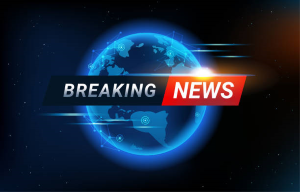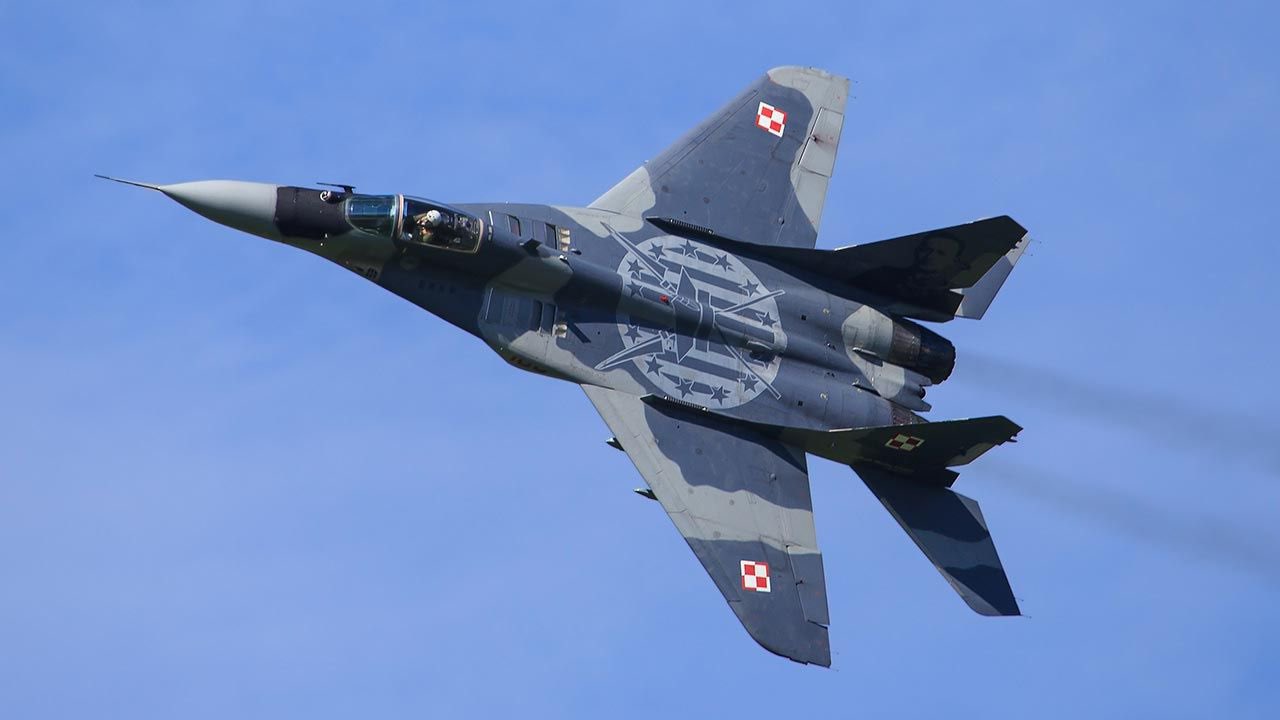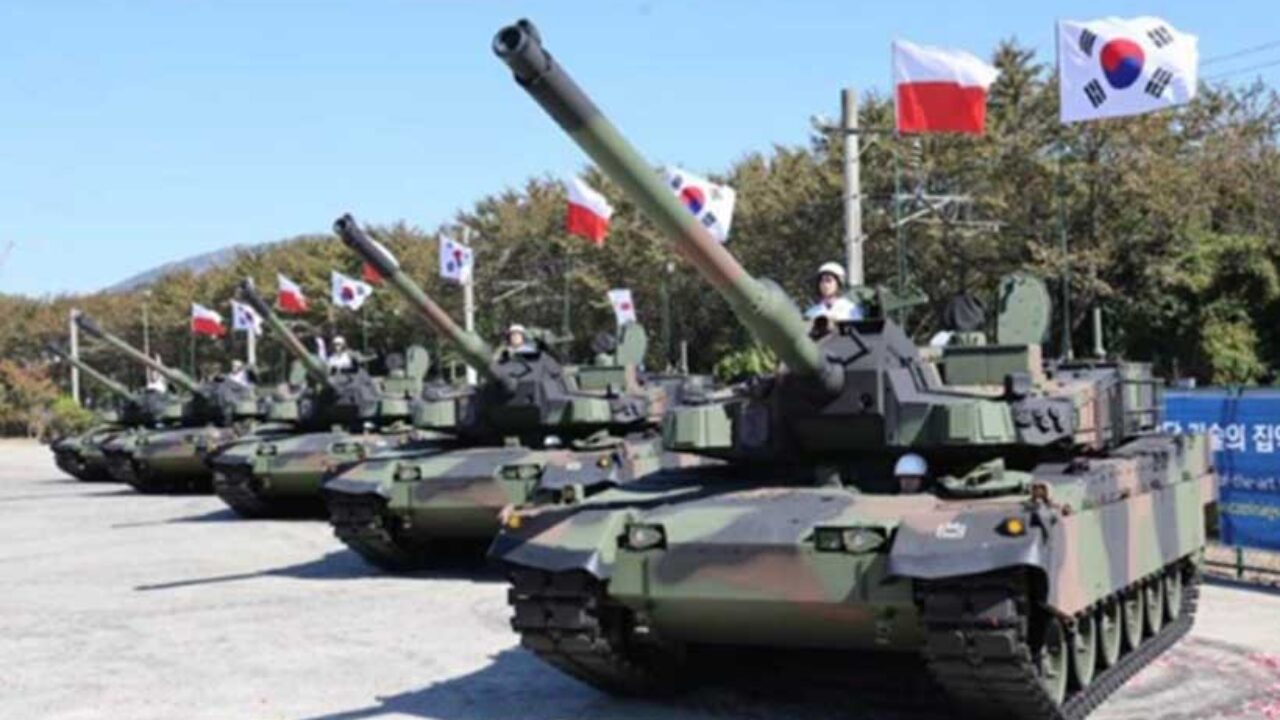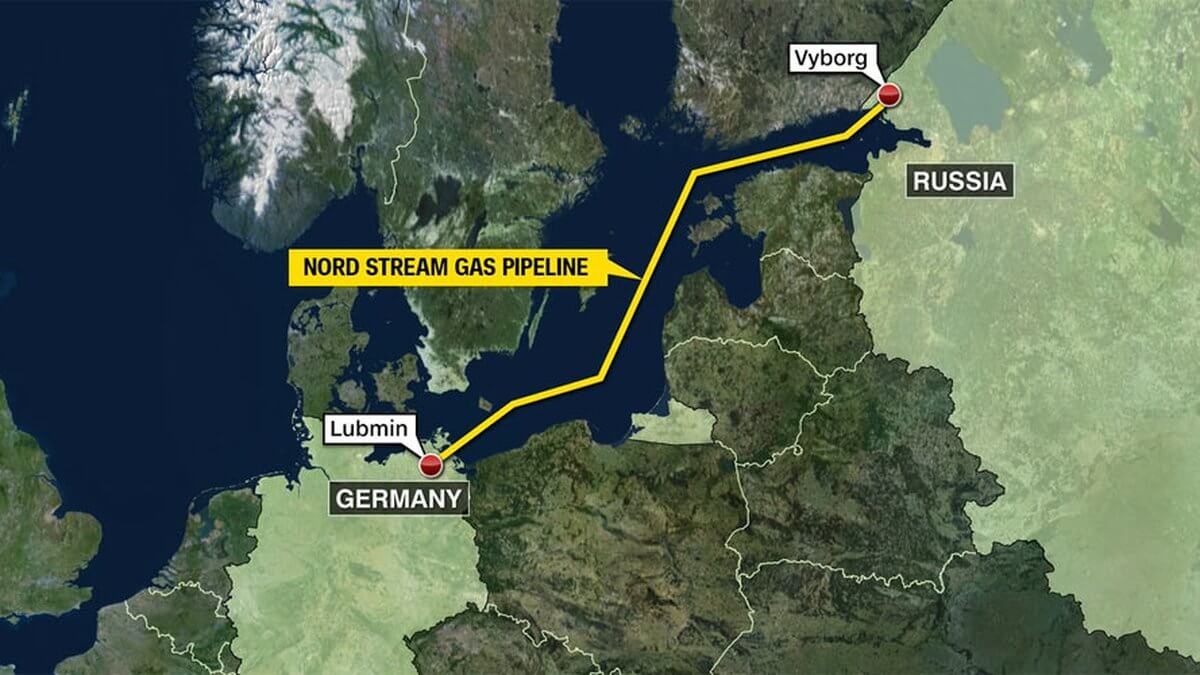Largest Arms Build-Up In Europe – Poland To Boost Military With F-35s, Abrams & Patriots To Check Russia

Poland is aggressively working to make its military the strongest in Europe. The country is increasing its military strength, acquiring the latest weapon systems, and developing a significant arms industry, albeit at a high cost.
On July 9th, the Pentagon confirmed that Poland will acquire F-35 stealth fighters, Patriot missile systems, and Abrams tanks in a $2 billion deal as part of a major modernization drive. Interestingly, this comes at a time when China is holding drills with Belarus in the border region, and Russia is hosting the Indian PM for a bilateral meeting.
Ever since Russia invaded Ukraine, Poland has been most concerned that it could be the next target. Polish-Russian relations have traditionally been complex. They are somewhat shaped by their geostrategic location and complicated shared history. This, combined with ongoing political and economic disputes, creates a situation where hopes for improvement are slim.
Poland has been most affected by the Ukraine war. It has taken a strong pro-Ukraine stand. Poland is the leading state providing support to Ukraine with significant arms support, including drones. It allowed the largest number of Ukrainians as refugees. Poland now considers itself the frontline NATO state facing the resurgent Putin-led Russia.
AfriPrime App link: FREE to download...
https://www.amazon.com/Africircle-AfriPrime/dp/B0D2M3F2JT
Poland-Russia Dynamics
Poland and Russia, neighbors for 1,000 years, share some painful history. They once competed for primacy in Eastern Europe. Austria, Prussia, and Russia partitioned Poland three times between 1772 and 1795.
Russia made Poland a principality within the Russian empire and engaged in heavy Russification until Poland’s independence in 1918. Another attempt by the communist Soviet Union to take back Poland in its fold ended with the Red Army’s defeat at the Battle of Warsaw in 1920. Later, in 1940, Stalin occupied Poland and executed over 20,000 Polish officers and intelligentsia. Poland was partitioned again with Germany.
The Soviets occupied the entire Poland at the end of World War II, imposed a communist regime until 1989, and created full dependence on the Soviet Union. Russia’s annexation of Crimea in 2014 and the ascent of the right-wing populist and national-conservative “Law and Justice” political party in Poland in 2015 led to a more active anti-Russia policy.
The general perception that Russia was the main threat in the Baltic Sea Region increased. The same is reflected in the “Defence Concept of the Republic of Poland,” published in May 2017.
It states that the aggressive policy of the Russian Federation poses a direct threat to the security of Poland and other countries on NATO’s eastern flank. Poland feels that Russia could use its armed forces to destabilize neighbors and undermine their territorial integrity.
Poland’s May 2020 National Security Strategy (NSS) reaffirmed this assessment. Poland is concerned about Russia’s offensive military capability, Russian anti-access/area-denial (A2AD) systems using new long-range precision weapons, including hypersonic ones, and the increasing hybrid operations capability.
Poland & NATO
Poland joined NATO in 1999. All of NATO is already engaged in supporting Ukraine against the war with Russia. Poland has now become a front-line state. It has transferred a significant amount of weapons to Ukraine, including a large number of tanks, infantry fighting vehicles, multiple rocket launchers, self-propelled howitzers, and short-range portable air defense systems.
Poland and the Baltic States strongly favor more NATO forces in their territories, including U.S. military presence in the region.
Poland already hosts a U.S. anti-missile defense base, a rotational U.S. Armoured Brigade, a Combat Aviation Brigade, an MQ-9 Reaper UAV detachment, and a division-level Mission Command Element. In the future, Poland hopes to host a U.S. Corps-level HQ.
Homeland Defence Act (2022)
While NATO and the United States are supporting Poland in strengthening its military power, Poland itself has begun spending more on defense. After Poland joined NATO in 1999, the Polish Parliament passed a Bipartisan law requiring defense expenditures to be at least 1.95 percent of Gross Domestic Product (GDP).
Prompted in part by the 2022 Russian invasion of Ukraine, the Homeland Defence Act was enacted. In accordance with the act, Poland intends to roughly double the size of the armed forces to 300,000 personnel and to spend at least 3 percent of GDP on the defense budget in 2023. This includes increasing the size of the tank fleet by adding approximately 1,000 new tanks and adding 600 new howitzers to Poland’s ground forces.
Defence Spending
Poland was already spending 2.4 percent of its GDP on defense by 2022. It is expected to be 4.6 percent of GDP in 2024 and 5.1 percent in 2025. Nearly 50 percent will be on capital acquisitions.
In September 2023, Poland received a record $2 billion Foreign Military Financing (FMF) direct loan to accelerate and backfill its defense modernization. The U.S. government also provided up to $60 million in FMF grants to cover the cost of the loan.
NATO Europe’s latest defense spending figures, as of February 2024, were at an all-time high of $380 billion, amounting to 2 percent of their GDP. Poland’s military spending, the 14th highest in the world, was $31.6 billion after growing by 75 percent between 2022 and 2023—by far the largest annual increase by any European country.
Poland has a very ambitious “Technical Modernization Plan” (TMP) for its Armed Forces. The plan currently estimates spending $131 billion on new equipment between 2021 and 2035.
Major Defence Requirements
The HARPIA program was launched in 2018 to replace the Soviet-era MiG-29 and Su-22 fighter aircraft within the next decade. It involves the purchase of 32 F-35A Lightning II fighters.
AfriPrime App link: FREE to download...
https://www.amazon.com/Africircle-AfriPrime/dp/B0D2M3F2JT

The first aircraft will join service by late 2024. As part of Poland’s NAREW air defense program, MBDA will provide a highly advanced mobile air defense system to handle threats up to 40 km and beyond, utilizing the CAMM-ER missile developed in cooperation with the UK and Italy. The contract, valued in excess of £4 billion, involves unprecedented transfer of key technologies. The Polish PGZ-NAREW Consortium will make more than 1,000 CAMM-ER air defense missiles and over 100 launchers.
The US has agreed to furnish the Polish Armed Forces with 96 AH-64E Apache helicopters, which would cost $12B, as part of Poland’s ‘Kruk’ program. Poland is also interested in the futuristic Orka-class submarine currently planned for the Royal Netherlands Navy and being built by the French Naval Group.
In April 2022, Poland ordered 250 M1A2 SEPv3s Abrams main battle tanks (MBTs) along with the full support package and ammunition. The deliveries began in June 2024. Under a separate agreement, in 2022, the US Army transferred 28 M1A2 SEPv2s for training Polish crew.
Poland also ordered twenty M142 High Mobility Artillery Rocket System (HIMARS) launchers and associated large numbers of Launcher Loader Module kits. They will get 45 M57 Army Tactical Missile Systems (ATACMS) and Range Alternative Warhead (GMLRS-ER AW) pods.
The first shipments arrived in mid-2023. To supplement the HIMARS, Poland ordered 300 South Korean K239 Chunmoo MLRS (multiple-launch rocket system) in August 2022. Deliveries began in 2023. As per the terms of the 2022 deal, South Korean-based Hyundai Rotem agreed to supply Poland with 180 K2 MBTs by 2025, along with a training/logistics package and ammunition for the tanks.
On 26 August 2022, an executive contract of $2.4 billion was signed to acquire 212 K9A1, 155 mm self-propelled howitzer manufactured by South Korea’s Hanwha Defense as a first batch order.
Poland is investing in its air capabilities and is working to modernize its 48-strong F-16 fleet while also buying new F-35 stealth fighters. They have been keen to donate the existing F-16s to Ukraine in exchange for newly built Block 70 aircraft, but that is now being done by Denmark and the Netherlands.
On 28 July 2022, Poland signed with Korea Aerospace Industries (KAI) a deal for 12 FA-50 Block 10 and 36 FA-50PL Block 20 supersonic trainers.
AfriPrime App link: FREE to download...
https://www.amazon.com/Africircle-AfriPrime/dp/B0D2M3F2JT

Military Personnel
Poland’s military is traditionally land force heavy, with an overall total of 198,251 military personnel. There are 73,453 troops in the Land Forces, 17,589 in the Air Force, 6,426 in the Navy, and 3,390 in Special Forces (SOF).
In 2023, Poland established a Territorial Defence Force (TDF) comprising around 40,000 troops and growing. Cyber-security, Information Warfare, and Intelligence are being given priority to address increased Russian capabilities and threats.
Polish cyber teams now regularly participate in multinational exercises with NATO. Countering Russian propaganda is another area of action.
Refugee Crisis
More than 6 million refugees from Ukraine have fled to other countries because of the war, which began in February 2022. More than 950,000 of these refugees are living in neighboring Poland, but numbers are stabilizing now.
41 percent of them are school-age children. Even before the onset of the war, there was a sizable Ukrainian population in Poland. Around 65 percent of Ukrainian refugees in Poland have now found work. Families are starting to settle in. Many will never go back to Ukraine.
In the lead-up to elections last October, political parties tried to capitalize on anxieties about the impact of hosting Ukrainian refugees on the Polish economy and social services.
Public support for hosting Ukrainians is dropping. Also, the refugee flow is being used by Russia to infiltrate intelligence operatives to influence and destabilize Poland and create an anti-Ukrainian groundswell.
AfriPrime App link: FREE to download...
https://www.amazon.com/Africircle-AfriPrime/dp/B0D2M3F2JT
Poland Key For NATO Defence
Poland’s defenses will be critical to stopping Russian armor advances into Europe. Poland could also be the staging ground for any Russian advance towards the west.
Poland has a direct border with Russia (the Kaliningrad Oblast) and with Belarus, a staunch Russian ally. Polish civil and military infrastructure will support mobility. Building and maintaining infrastructure is costly. There is a rail gauge mismatch between Poland and the Baltic states.
As a front-line state, Poland also needs to enhance its airbase infrastructure to take on more modern aircraft and larger NATO numbers that may transit or operate. Also, UAV and drone operations will increase. The next challenge will be enhancing capabilities to protect critical infrastructure that will be in long-range artillery distance from enemy attacks.
Poland’s Defence Industry
The relatively low cost of production in Poland has led many foreign defense companies to seek cooperative agreements or joint venture opportunities with Polish defense firms.
Examples of such projects include the co-production of tanks, armored vehicles, artillery, ships, aircraft, and helicopters. The key other sectors of interest for Poland are missiles and missile defense systems, military land vehicles, and electronic warfare.
The Polish Armaments Group (PGZ) consolidates approximately 50 Polish state-owned companies, 30 of which are defense companies and 20 others, including shipbuilding and new technologies. In 2022, PGZ was ranked 70th out of the 100 biggest defense companies in the world. Cooperation with PGZ has been a key to success for many foreign defense firms entering the Polish market.
Major U.S. defense companies such as Raytheon Technologies, Lockheed Martin, Northrop Grumman Defense Systems, Boeing Defense, Bell Textron, L3Harris Technologies, General Dynamics, Oshkosh Defense, and BAE Systems North America are active in the Polish market.
Some of the leading Polish companies are – Thales Polska Sp zoo. This Thales subsidiary provides technology solutions for the aerospace, ground transportation, defense, security, and space sectors. The company specializes in providing advanced air defense, tactical vehicles, and naval and unmanned aerial solutions.
WSK PZL-Rzeszów S.A. specializes in marine and industrial turbochargers. Airbus Poland SA runs a production plant, design office, and MRO (maintenance, repair, and overhaul) center providing services to the C295 fleets of Poland and a few neighbors. Some 40 percent of airframe components in all C295 aircraft sold globally are produced there. Furthermore, about 70 percent of all electric harnesses for the transport aircraft manufactured by Airbus are manufactured in Warsaw. They also make aero-structures for A330.
WB Group is a Polish electronics and aeronautics manufacturer and one of Europe’s largest private defense contractors. Established in 1997, the Group produces military communications equipment, command and control systems, fire-control systems, unmanned aerial vehicles, and loitering munitions. WB Electronics Warmate drones were used by Ukraine during the Russian invasion, and India has also acquired over 100.
Poland’s long overdependence on Russian natural gas, crude oil, and coal supplies has been an important issue of concern. Since 2015, the country has been trying to diversify this.
Poland opposed the construction of the Nord Stream 2 pipeline. They feel Russia’s capability to cut off supplies could be used as an “other-than-military” weapon. They are trying to increase renewable sources.
AfriPrime App link: FREE to download...
https://www.amazon.com/Africircle-AfriPrime/dp/B0D2M3F2JT

Conclusion
The two World Wars were fought in Europe. Will the third also begin there? The strong-headed Nazis and the erstwhile communists had been somewhat ruthless.
There have been traditional suspicions between the Scandinavian countries and Russia. Most countries prefer liberal democracy as a form of government. But even in liberal democracies, there are political upheavals taking place, which is resulting in a right-wing revival.
Poland has seen its share of subjugation. It is worried about autocratic Putin-led Russia, which is the new front. Poland considers the Russian invasion of Ukraine an existential threat.
According to Global Firepower’s 2023 military strength ranking, Poland was fifth among the strongest militaries in Europe, after Russia, the UK, France, and Italy. Poland plans to have Europe’s strongest army facing Russia.
Through a series of major arms deals, Poland is set to establish military supremacy in continental Europe, albeit at a high cost. But they will continue to face the “gun or butter” debate.
As a bulwark, it will be in NATO’s interest to support Poland becoming militarily strong. With Belarus allowing Russian short-range nuclear weapons on its territory and China holding drills near its border with Belarus, things have become even more complex.
Many feel that Putin never imagined his war in Ukraine would push Finland and Sweden into NATO. Also, he did not visualize the anger in Poland.
The rise of military capabilities in Europe will bring greater tensions. This, combined with competition and confrontation between the USA and China, will lead to Russia and China joining up and using their might to change the world order. For India, it is a wait-and-watch situation while advising both sides to show sagacity, maturity, and caution. “Strategic Autonomy” remains a great policy.
AfriPrime App link: FREE to download...
- Questions and Answers
- Opinion
- Story/Motivational/Inspiring
- Technology
- Art
- Causes
- Crafts
- Dance
- Drinks
- Film/Movie
- Fitness
- Food
- Games
- Gardening
- Health
- Home
- Literature
- Music
- Networking
- Other
- Party
- Religion
- Shopping
- Sports
- Theater
- Wellness
- News
- Culture
- War machines and policy

